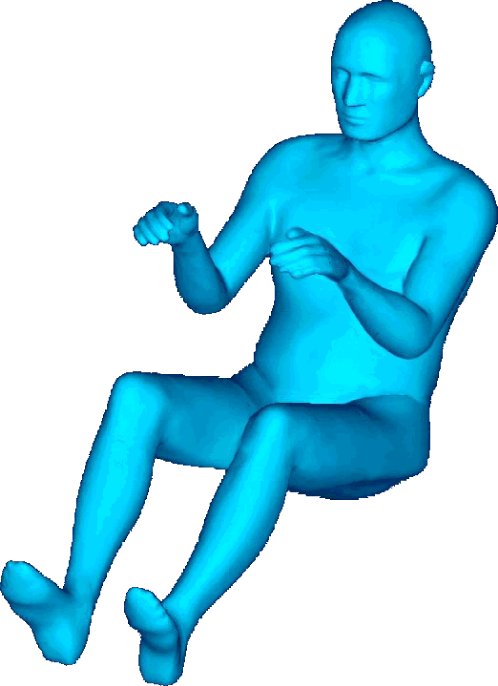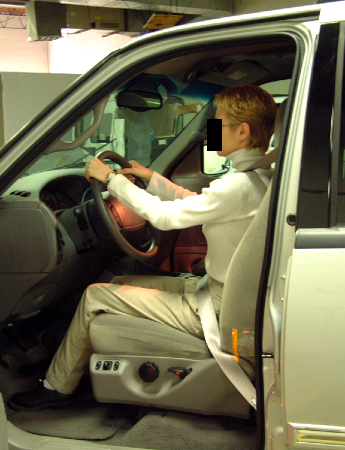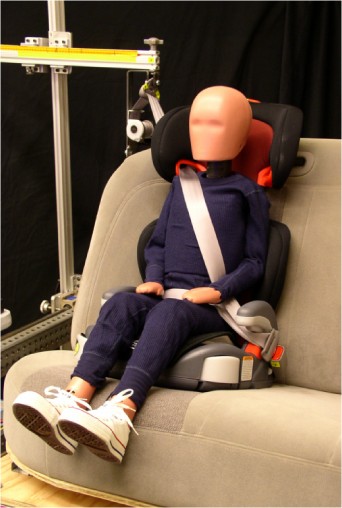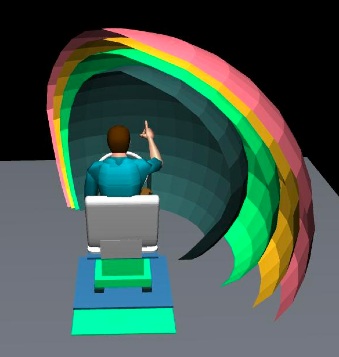>>> Research
Recent Highlights
Click here for some recent research highlights.
Humans in Engineered Systems
My research applies anthropometric and biomechanical methods to improve the design of products and workplaces with which people interact. The outcomes are usually new or improved tools for system design or assessment. I have a strong empirical emphasis, with nearly all of my projects having a data-collection component, usually with human subjects. Most of my research focuses on physical interactions or the relationship between subjective perception and physical interaction (for example, with seat belt fit). And most of my work is vehicle related, even the industrial ergonomics, which is inspired primarily by issues faced in automotive assembly plants. However, the methods and techniques are broadly applicable to any area in which design tools that represent human variability are needed.
Engineering Anthropometry

Applied anthropometry might be the oldest component of human factors analysis. But most applications of anthropometric data are univariate and neglect important postural variance. My research and that of my colleagues in the Biosciences Group focuses on functional approaches that develop predictive empirical models to solve human engineering problems. Our research characterizes the size, shape, and posture of vehicle occupants, both adults and children, but we've also applied these methods in other domain
Driver and Passenger Ergonomics

Much of my research has focused on the development of tools to represent human size, posture, and preference in vehicle design. With my colleagues at UMTRI, I've conducted studies of drivers and passengers in vehicles and in laboratory mockups. The studies cover a wide range of on-road vehicles, including passenger cars, light trucks, and heavy trucks. These studies have produced industry-standard vehicle design tools that are used in the auto and truck industry. The models also have applications in crash safety, including crash dummy positioning.
Crash Safety for Vehicle Occupants

The Biosciences Group conducts basic biomechanics research on human tolerance to impact and applied work in crash dummy design, among other areas. During the 1990s, I led a series of projects to address abrasions and thermal burns produced by airbags. In recent years, I've focused on child occupant protection issues, including studies of child occupant posture and belt fit and improved crash dummy design. We are also increasingly involved in computational simulation of vehicle occupants for restraint system optimization.
Digital Human Modeling for Ergonomics

Software representations of humans are increasingly the primary tool used to conduct ergonomic analyses of products and workplaces during the design phase. Compared with other human factors tools that are more abstract, digital human models (DHM) provide a high level of apparent validity and have proven to be tremendously valuable for communicating physical design issues, e.g., reach and clearance. However, DHM analyses can be misleading and produce incorrect design guidance if the limitations of the software are not kept in mind. My research, and that of my colleagues in the Human Motion Simulation Laboratory, focuses on improving the behavior of the software manikins so that users can issue high-level commands (pick up object A, place at location B) and have the DHM software generate all of the postures and motions associated with those actions. High-level control will improve the accuracy of ergonomic analyses and provide better repeatability and reproducibility.
©2024 Matthew P. Reed and The University of Michigan